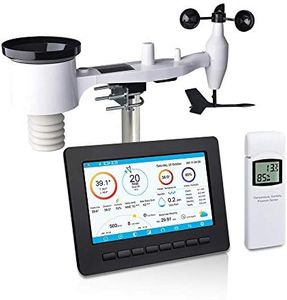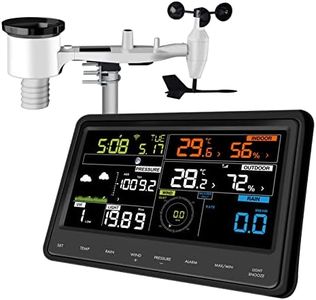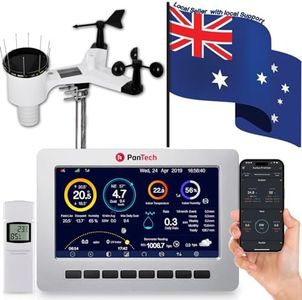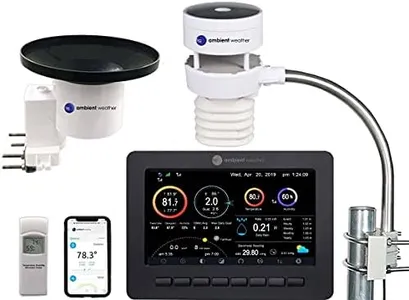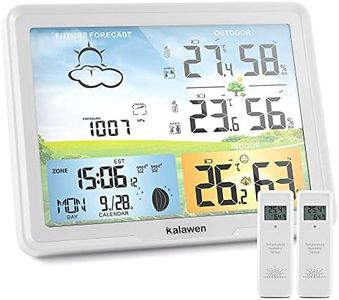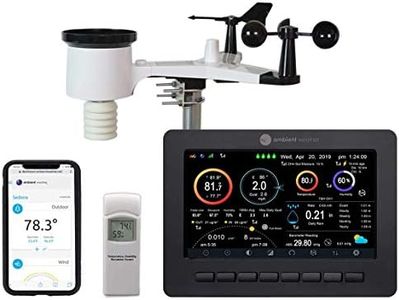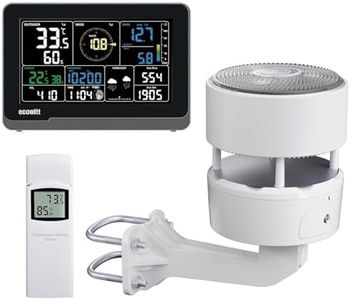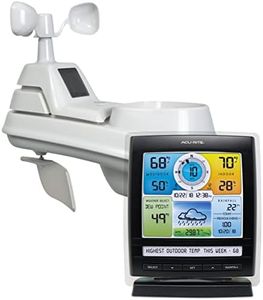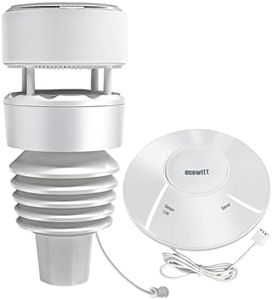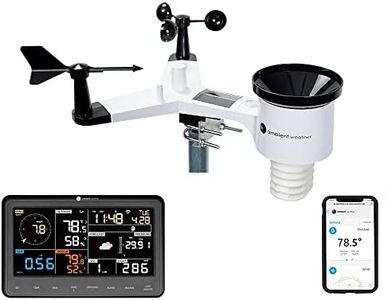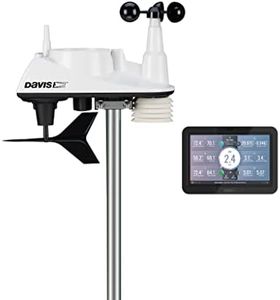We Use CookiesWe use cookies to enhance the security, performance,
functionality and for analytical and promotional activities. By continuing to browse this site you
are agreeing to our privacy policy
10 Best Home Weather Stations
From leading brands and best sellers available on the web.Buying Guide for the Best Home Weather Stations
Choosing a home weather station can greatly enhance your understanding of the local climate and help you make better decisions for gardening, outdoor activities, or simply satisfying a curiosity about weather patterns. To pick the best fit for you, start by thinking about what you want to monitor and how you want to access your weather data—features can range from simple temperature readers to complex devices that measure multiple atmospheric factors and connect wirelessly to your smartphone. By understanding the most important features, you’ll be better prepared to choose a station that suits your needs and lifestyle.Measured ParametersMeasured parameters describe what weather elements the station can track—commonly temperature, humidity, barometric pressure, rainfall, wind speed and direction, and sometimes UV or solar radiation. More parameters provide a fuller picture, but not everyone needs them all. If you simply want to know the indoor and outdoor temperature, a basic model is enough. For gardening, rainfall and humidity are key, whereas wind data matters for sailing or weather hobbyists. Decide on the features that match your interests and climate concerns.
Data ConnectivityData connectivity refers to how you receive and view the station’s readings. Some stations display information only on a local screen, while others send data wirelessly to your phone or computer, or even upload it to online weather networks. Basic models may offer just a wired or wireless console; higher-end ones have apps, WiFi, and integration with smart home systems. Consider how you want to access your data—if you’ll check only at home, a local display works; for remote monitoring, look for WiFi or mobile app compatibility.
Accuracy and CalibrationAccuracy and calibration determine how closely your weather station’s readings match actual conditions. Generally, stations are rated with a certain error margin, like ±1°C for temperature. For most household needs, standard accuracy is fine, but enthusiasts or those needing precise data (for research or sensitive gardening) should seek models known for higher accuracy and easy calibration. Think about how critical exact numbers are for your purpose—if it’s just for fun or basic planning, don’t stress over fractions of a degree.
Installation and PlacementInstallation and placement are about how and where you’ll set up the sensors. Some stations are simple and can be placed on a window or table, while others have multiple outdoor sensors for accurate readings. Proper placement—like an open spot for wind sensors or shaded locations for temperature—is important for the best results. Consider your home: if you have a suitable outdoor spot and are comfortable with a bit of DIY, you can go for more advanced sensors. For convenience or apartment living, a simpler setup might be better.
Power SourcePower source covers how the station and its sensors are powered. Options include batteries, solar panels, AC adapters, or a mix. Battery-powered units offer flexibility in sensor placement but require periodic battery changes. Solar-powered sensors can reduce maintenance, especially for outdoor use, but still usually have a backup battery. Think about your willingness to change batteries or the availability of power outlets when choosing your weather station.
Display and User InterfaceDisplay and user interface refers to how easy it is to read and interact with the station’s information. Some stations have large, bright screens with graphs and clear readings, while others offer minimal displays or rely on apps. A good user interface makes everyday use pleasant and efficient, especially for people who want quick access to key data. Consider whether you prefer a standalone display, use your phone for everything, or need larger, more accessible text for easy viewing.
ExpandabilityExpandability refers to the ability to add more sensors or features over time, such as soil moisture sensors or indoor modules. This is important if you think your needs may grow—for example, if you start gardening or want to monitor multiple rooms or zones. Beginners or those looking for a simple solution can ignore this, but tinkerers and hobbyists should look for stations that allow upgrades.
